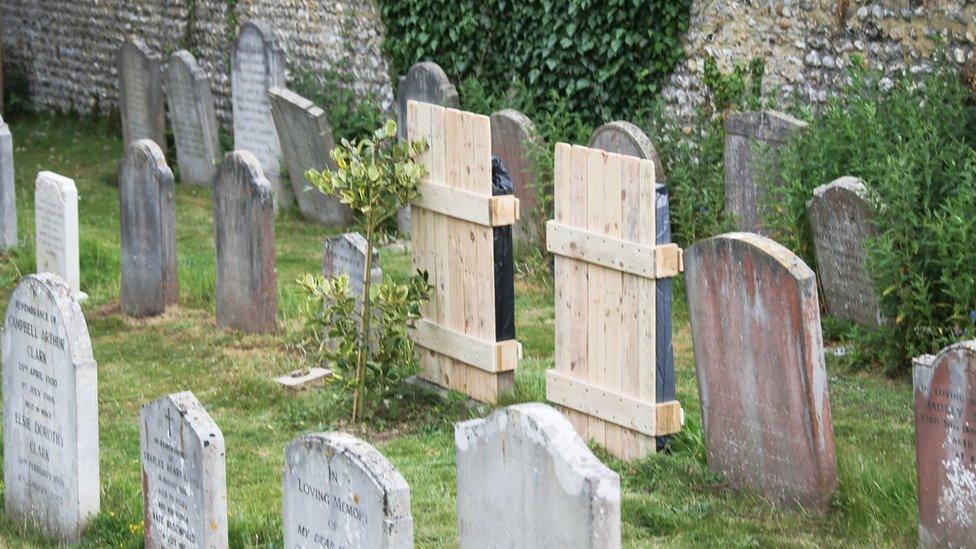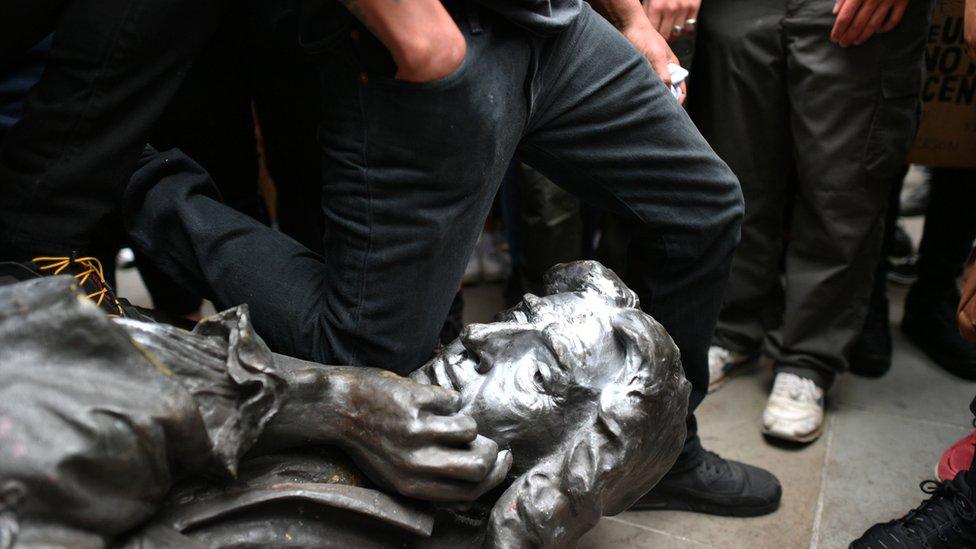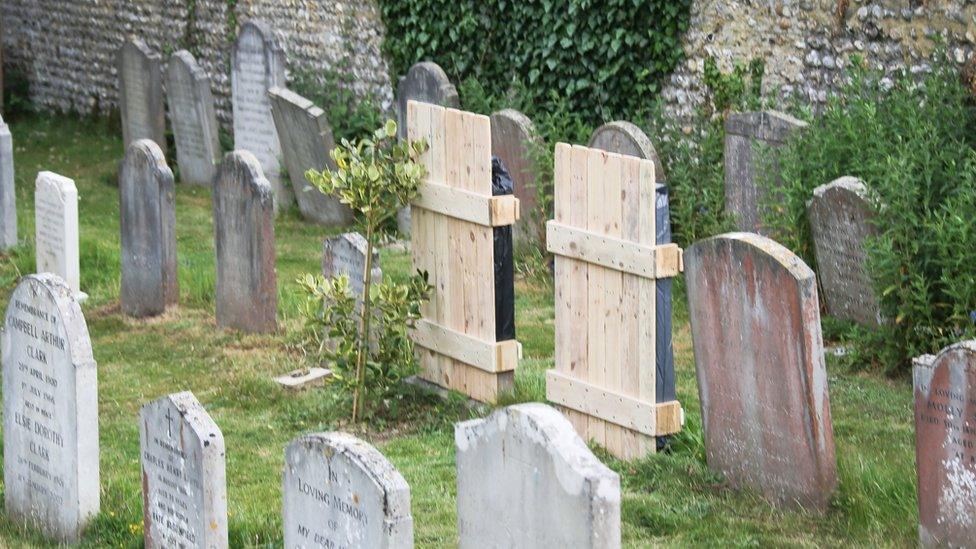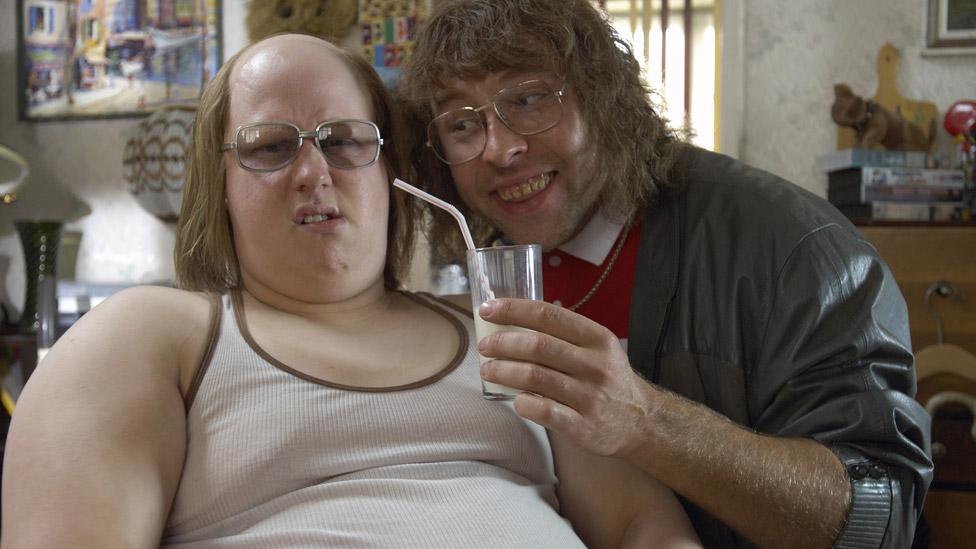Sussex music hall singers' 'racist' gravestones to be re-engraved
- Published

Both music hall singers, who wore blackface, died in 1962
A "derogatory and racist expression" will be removed from the headstones of two music hall singers.
But the gravestones of G H Elliott and Alice Banford, who both wore blackface, will return to the East Sussex graveyard from where they were removed.
They were moved from St Margaret's Church, in Rottingdean, last June due to their "offensive" inscriptions.
Mark Hill QC, Chancellor of the Diocese of Chichester, has now ruled the headstones should be altered.
It comes after the families of both singers were contacted by church officials over the re-engraving.
The performers, who wore blackface up until the 1950s, died in 1962, and their headstones were erected within weeks of each other.

The gravestones remain the property of the families
The Communities Secretary Robert Jenrick announced proposals to "retain and explain" controversial historic statues or monuments.
However, in his judgement, Mr Hill said while there was a need to be "honest about past wrongs" and avoid "airbrushing history", the headstones had "no intrinsic heritage significance".
He described a word on the headstones as "derogatory and racist", adding: "It evokes degrading stereotypes of people of African heritage.
"It is likely to cause distress to those visiting the churchyard."
Local concern about the gravestones was first raised in April 2019 when a resident wrote to St Margaret's complaining the word was not acceptable.
The matter escalated after the toppling of the statue of slave-trader Edward Colston in Bristol last June.

Protesters knelt on the neck of the bronze statue of Colston
The Archdeacon for Brighton and Lewes, Martin Lloyd William, said he found the inscription on the gravestones "deeply offensive", and they were covered up before being removed.
Mr Hill added: "Refacing and re-cutting the existing lettering to replace the derogatory term would remove the cause of offence with the least possible damage to the integrity of the headstone.
"The mission of St Margaret's is likely to be compromised if it were perceived as condoning the continuing display of racist terminology, notwithstanding it may have been acceptable in the past."
Related topics
- Published12 June 2020

- Published11 June 2020

- Published10 June 2020

- Published9 June 2020
